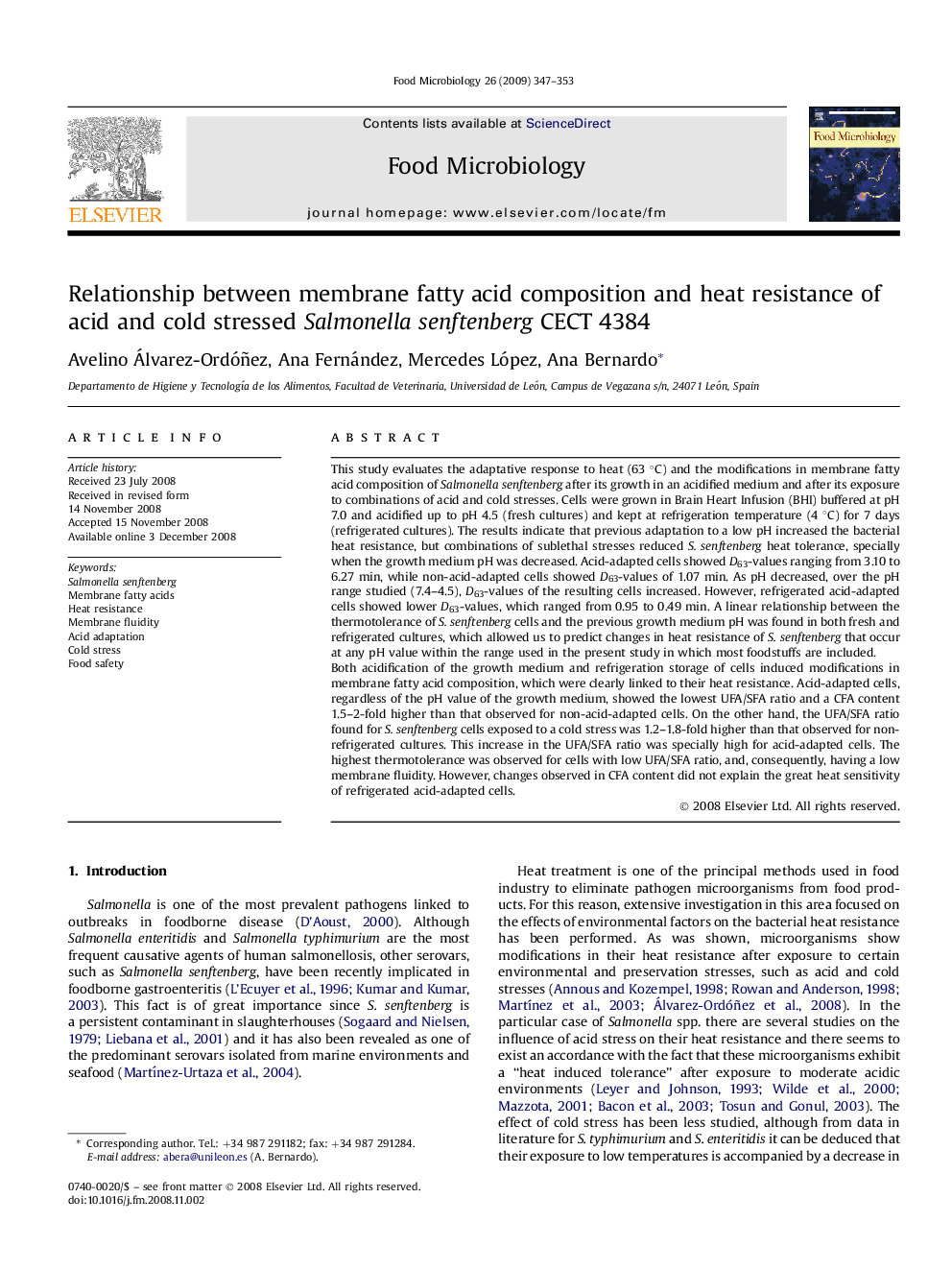| کد مقاله | کد نشریه | سال انتشار | مقاله انگلیسی | نسخه تمام متن |
|---|---|---|---|---|
| 4363532 | 1301560 | 2009 | 7 صفحه PDF | دانلود رایگان |

This study evaluates the adaptative response to heat (63 °C) and the modifications in membrane fatty acid composition of Salmonella senftenberg after its growth in an acidified medium and after its exposure to combinations of acid and cold stresses. Cells were grown in Brain Heart Infusion (BHI) buffered at pH 7.0 and acidified up to pH 4.5 (fresh cultures) and kept at refrigeration temperature (4 °C) for 7 days (refrigerated cultures). The results indicate that previous adaptation to a low pH increased the bacterial heat resistance, but combinations of sublethal stresses reduced S. senftenberg heat tolerance, specially when the growth medium pH was decreased. Acid-adapted cells showed D63-values ranging from 3.10 to 6.27 min, while non-acid-adapted cells showed D63-values of 1.07 min. As pH decreased, over the pH range studied (7.4–4.5), D63-values of the resulting cells increased. However, refrigerated acid-adapted cells showed lower D63-values, which ranged from 0.95 to 0.49 min. A linear relationship between the thermotolerance of S. senftenberg cells and the previous growth medium pH was found in both fresh and refrigerated cultures, which allowed us to predict changes in heat resistance of S. senftenberg that occur at any pH value within the range used in the present study in which most foodstuffs are included.Both acidification of the growth medium and refrigeration storage of cells induced modifications in membrane fatty acid composition, which were clearly linked to their heat resistance. Acid-adapted cells, regardless of the pH value of the growth medium, showed the lowest UFA/SFA ratio and a CFA content 1.5–2-fold higher than that observed for non-acid-adapted cells. On the other hand, the UFA/SFA ratio found for S. senftenberg cells exposed to a cold stress was 1.2–1.8-fold higher than that observed for non-refrigerated cultures. This increase in the UFA/SFA ratio was specially high for acid-adapted cells. The highest thermotolerance was observed for cells with low UFA/SFA ratio, and, consequently, having a low membrane fluidity. However, changes observed in CFA content did not explain the great heat sensitivity of refrigerated acid-adapted cells.
Journal: Food Microbiology - Volume 26, Issue 3, May 2009, Pages 347–353